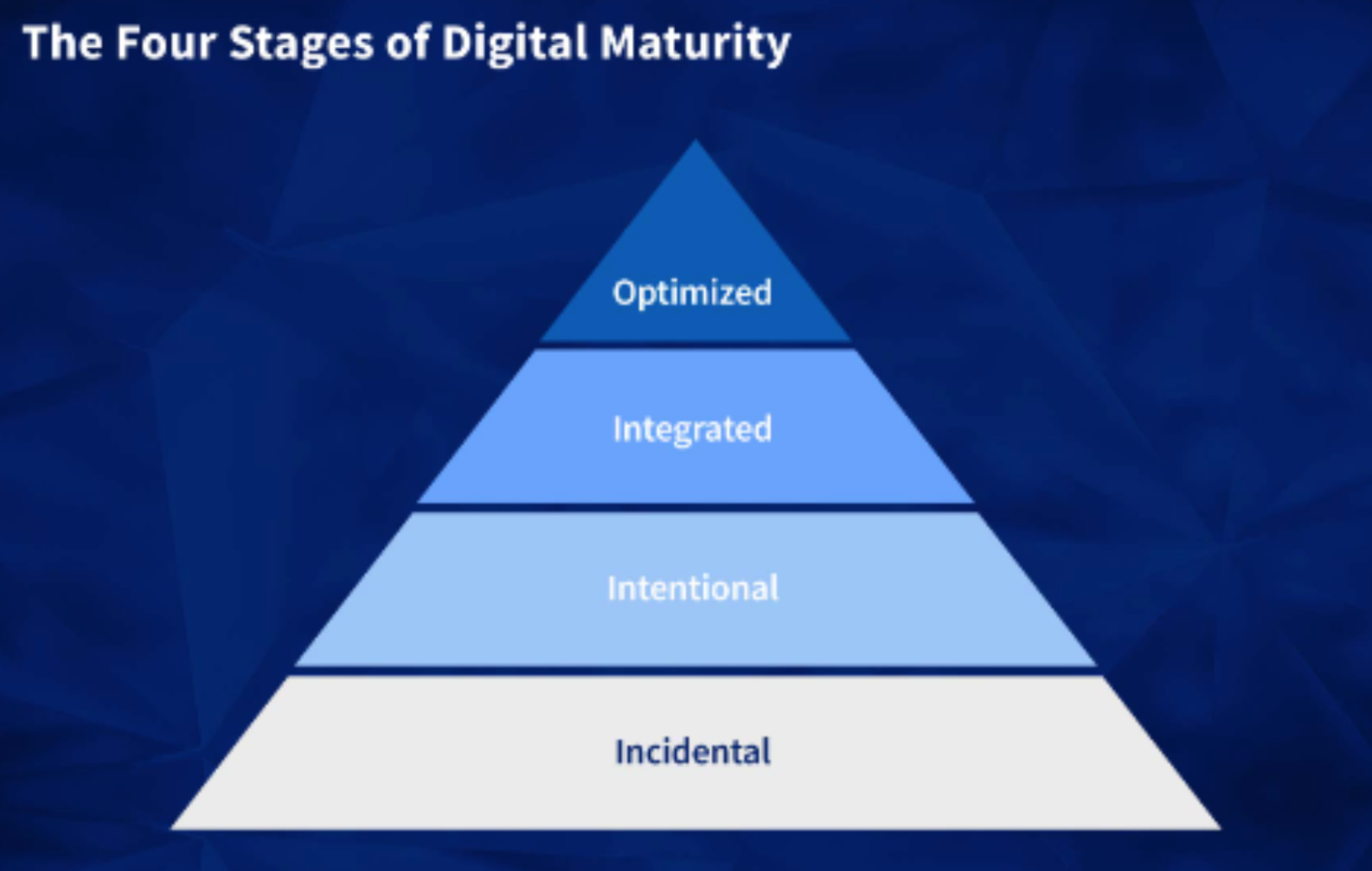The Great Promise: Organizational Productivity, Customer Experience, and Employee Experience lead to increased Profits, Lower Costs, and Reduced Risks. Digitalization is the number one priority for many companies. To increase productivity, increase profits, lower costs, and improve customer and employee experience. 67% of organizations are under “incredible pressure” to accelerate digital transformation. (Forrester). Hence, the pivotal inquiry is not if each company will need to undertake a digital transformation journey based on their business but rather the approach they will adopt to achieve it.
- Think of the Digital Demon and not just more Digital Assets
To address this gap, IT must shift its thinking. IT Systems + Workflows isn’t enough to cut it without the User. Neglecting the user experience can lead to difficulty retaining customers and employees and reaching business goals. Employees are, on average, using 11 applications. Customers are using a more significant number of applications than employees. On top of the number of applications are the different processes, policies, and procedures which keep changing. This is exhausting to the User. This Digital Demon needs to be slayed to get the best out of your investments. Therefore, closely aligning with business goals, providing tools that promote intuitive work management and colleague interaction for end-users, prioritizing digital delivery, and implementing changes smoothly are critical. Furthermore, measuring program success needs to be approached differently. - Include Adoption and User Experience in Project KPIs
In 71% of enterprises, the C-suite is intensely interested in adopting new technologies. To successfully implement new technology, more is needed to push it out and expect employees to use it. To effectively introduce new technology, it’s essential to communicate and educate employees. This includes using various methods such as emails, videos, technology ambassadors within the business, briefing the help desk, and providing end-user self-service capabilities. As everyone learns differently, it’s crucial to tailor the approach to meet the requirements of all end-users. But more importantly, in-app guidance is needed. - Digital Experience Level Agreements (XLA)
There is a need for Digital Experience Level Agreements, which keep Users in the middle of it all. Users consume, absorb, learn, and adapt technology differently. One size fits all never worked, and it will only work now. The focus should be on something other than what we can do better now, but instead on what we can achieve today that was previously impossible. - A Paradigm Shift in thinking about User Adoption
Most companies use change management to ensure adoption. According to learning solutions, 70% of what is learned in a magazine is forgotten in a day. 60% say change management programs are ‘no longer fit for purpose’ because User Adoption isn’t a one-time exercise. With the attrition, changing roles, processes and policies, and product updates, everything looks completely different in a few years. In User Adoption, a significant breakthrough is made possible by the emergence of Digital Adoption Platforms (DAP) pioneered by WalkMe. DAP is a single pane of glass across all. The management layer projects the information our users need on the pane of glass, both customers and employees, to ensure an effortless, platform-agnostic experience.
At this moment, DAP is like the elephant which eight blindfolded people are touching. Oh, it’s an RPA, oh, it’s an on boarding checklist, oh, it’s the bubble that forms when you hover over a field, it’s a chatbot, it’s an LMS, etc.
Hold your thought and drop us an email. DigitizeNow is a digital adoption expert and will happily help you in your digital journey.



